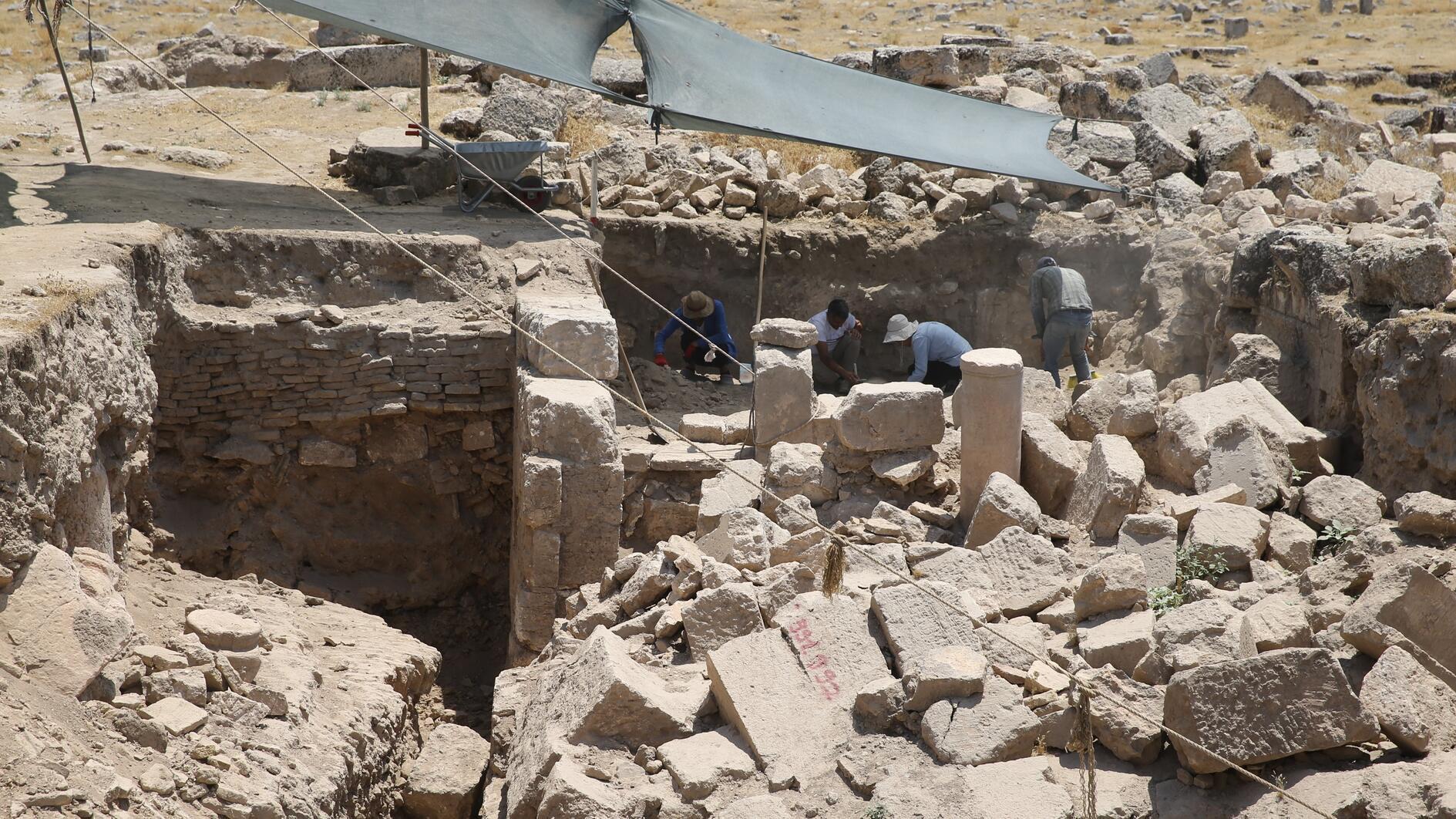
Archeologists have uncovered the ruins of a church conjecturally dating back to the 5th century at the Harran archaeological site, inscribed on the UNESCO World Heritage Tentative List, in the southeastern province of Şanlıurfa.
Professor Dr. Mehmet Önal, the site director from Harran University’s Archaeology Department, claimed that the historical splendor of Harran is being discovered through archeological excavations and that they focused their efforts on the unearthing of the local church building this time, which is located 200 meters north of the Harran Grand Mosque.
In the light of the excavation work carried out on the site, it has been discovered that the church suffered from both the Mongolian invasion and natural disasters.
“We observed during our work in the church that the Mongols burned and destroyed the building, but we have also clearly seen the traces of an earthquake as the entire north nave wall of the church is resting flat on its side in one piece," Önal said.
Stating that they have finished the excavation work in some parts, Önal said, “It is a huge church with a basilica layout. Now that we are in the north aisle, or main aisle, the majority of the nave is visible.”
Önal has also shed light on the structure of the historical church. “There are acanthus leaves engraved on the pillars. We also discovered stoa pillars in the large part of the north nave during our excavations,” he said.
Emphasizing that the head parts of the pillars seem to have dropped off, Önal said, “It means that subterranean pillars are currently awaiting for the excavation. The entire church, including the apse [the space used for prayer in churches] and other naves, will become visible as we continue to excavate.”
Önal pointed out that they have determined that the church's date corresponds to the Eastern Roman era, or the fifth century, and added: “The flooring of the churches constructed during this period are mosaic in the area. We are also expecting to see mosaics on the floor of this church."
Önal noted that the local church stands out from the other churches of its era with its size. “At more than 70 meters in length and constructed from cut block stones, it is the largest cathedral-level church in the Southeast region,” he said.
Önal informed that construction on the madrasah is still underway in the area and noted that restoration and excavation work had been finished at the Grand Mosque, which is now open to the public.